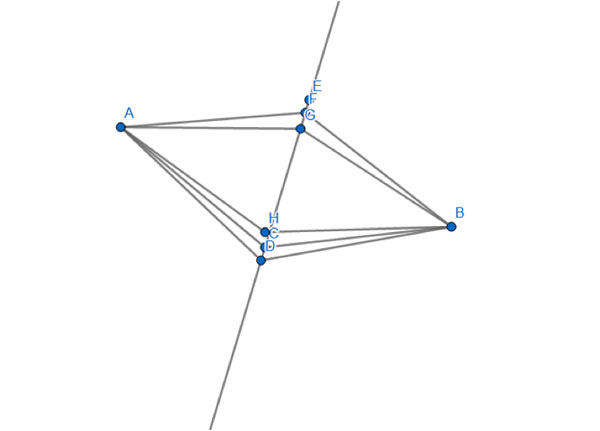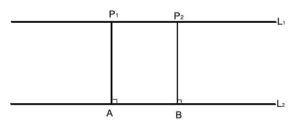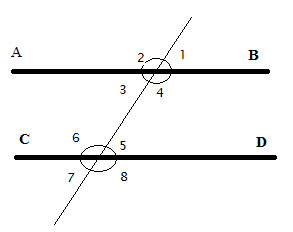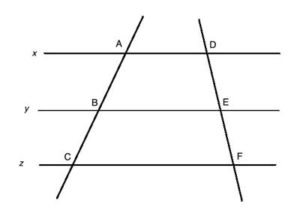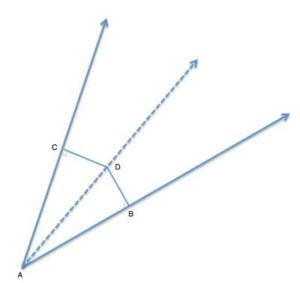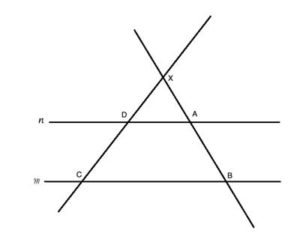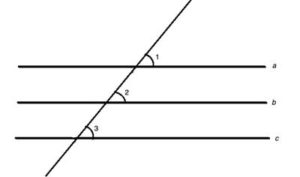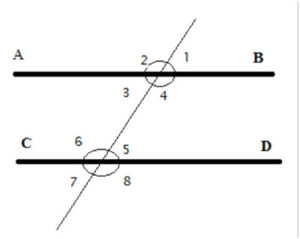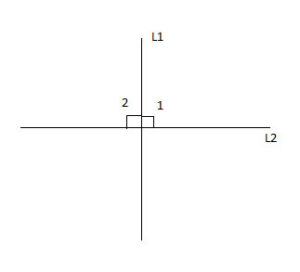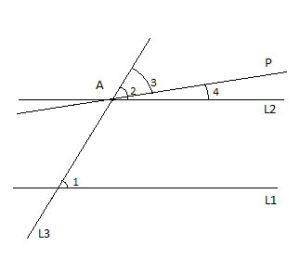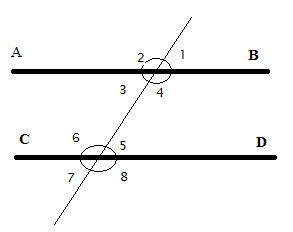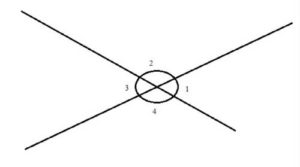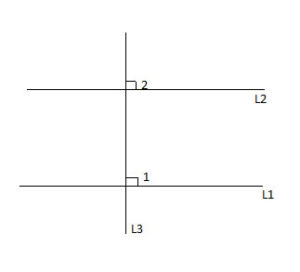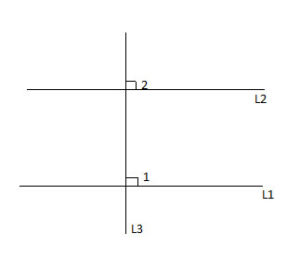Lines and Angles
Lines and angles are two of the most basic elements of geometry.
What is a line?
A line is an abstract concept. It has no width, only length, and that length is infinite in both directions. A part of a line that is bounded by two points is called a line segment. One of the formal definitions of a line is that it is the collection of all points that are the same distance from two other points on a plane:
The segment addition postulate states that if we have a line segment defined by two points, A and C, a third point , B, is on the same line if (and only if) the length of segment AB plus the length of segment BC is equal to the length of AC:
|AB|+|BC|=|AC|
Angles
When 2 lines or line segments intersect, they form angles:
We measure angles in units called degrees, and marked with a °, where a full circle is 360°.
--
Now that we've briefly explained the basic concept of lines and angles in geometry, let's scroll down to the post below that explains these concepts more in depth. For specific geometry problems in the area of lines and angles, check out the following links:
Intersecting Lines and Angles
Parallel Lines
Perpendicular Lines

